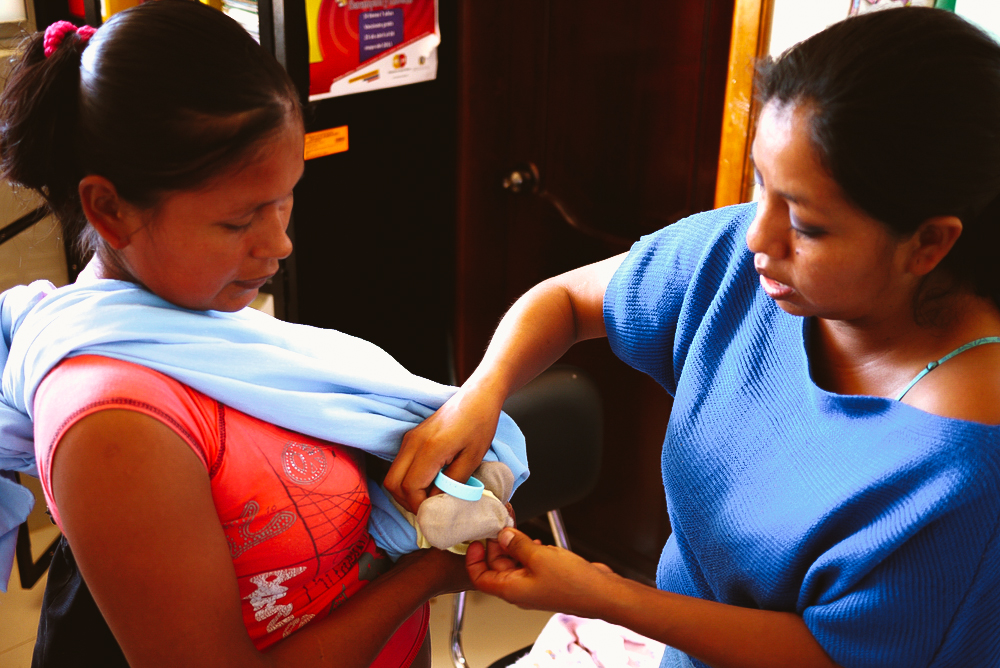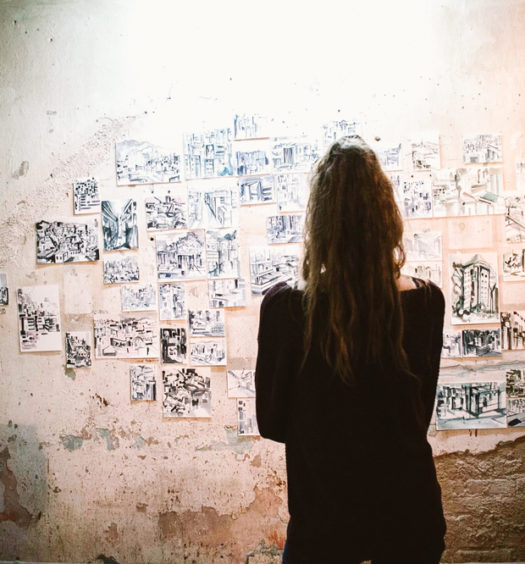Alma Sana: Vaccine Bracelets For Mothers In Developing Countries
 Though I am a medical student, until I began an internship earlier this summer, I did not realize just how much I have always taken vaccines for granted. I have never stopped to consider what a difficult process it must be for healthcare professionals and mothers to keep track of infants’ immunizations. Luckily, most of this is done by electronic medical records in our country. However, I had never stopped to think about the countries without electronic medical records—the countries that still rely on paper immunization cards. While it may sound easy for your mother or mothers in the United States to keep up with an important paper document, mothers in many other countries may not have this luxury—especially if they travel miles on dirt paths, often on foot, through rough terrain to reach the clinic. It is also difficult, much of the time, for these mothers to make their journeys back to the clinic for their infants’ subsequent vaccinations; the infants, thus, do not often receive all the shots in a series that are sufficient for complete immunization.
Though I am a medical student, until I began an internship earlier this summer, I did not realize just how much I have always taken vaccines for granted. I have never stopped to consider what a difficult process it must be for healthcare professionals and mothers to keep track of infants’ immunizations. Luckily, most of this is done by electronic medical records in our country. However, I had never stopped to think about the countries without electronic medical records—the countries that still rely on paper immunization cards. While it may sound easy for your mother or mothers in the United States to keep up with an important paper document, mothers in many other countries may not have this luxury—especially if they travel miles on dirt paths, often on foot, through rough terrain to reach the clinic. It is also difficult, much of the time, for these mothers to make their journeys back to the clinic for their infants’ subsequent vaccinations; the infants, thus, do not often receive all the shots in a series that are sufficient for complete immunization.
As a result of the challenges faced by mothers who live in poverty, in very rural communities, or with low education levels, many infants and children in developing nations do not receive full or timely vaccination.
Take Peru, for example. Despite Peru’s relatively high vaccine coverage compared to other developing countries, the children in poverty often do not receive their immunizations. Perhaps as a result, a child under five years of age who is born in the poorest 20% of the Peruvian population is five times as likely to die as a child born in the wealthiest 20% of the population (World Health Organization). This situation is not unique to Peru.
Lauren Braun, 2011 graduate of Cornell University, discovered this problem firsthand during a 2009 summer internship in a public health clinic in Cusco, Peru. Struck by what she saw as one of the major contributing factors to the low vaccination rates in Cusco—a lack of communication and follow up with mothers in rural areas, Lauren came up with an idea. She found a way to remind the mothers of exactly when their infants were due for vaccines (and which vaccines they were due for), so that even if they lost the paper or were unreachable via phone or mail (which was often the case), the mothers would still be able to look out for their children’s best interests by getting them vaccinated on time. Her idea came in the form of a simple silicon bracelet. Lauren founded an organization to create and promote the use of the bracelets and called it Alma Sana (which translates in Spanish to “healthy soul”). She received a Gates Foundation grant through their Grand Challenges Explorations initiative in November of 2012 and began a Phase I study of her vaccine reminder bracelet in both Cusco, Peru and in Tena, Ecuador.
The results were astounding:
- 91% of mothers said the bracelets helped remind them of their children’s vaccination visits.
- 90% of mothers said they would like to continue using the bracelets as reminders in the future.
- 87% of mothers said they would recommend the bracelets to other parents to use.
Due to the success of the bracelets, Alma Sana is in the process of planning a Phase II study—a randomized control trial and impact evaluation in Nigeria, Pakistan, and Colombia. The goal of the Phase II study is to determine the bracelets’ effectiveness at reminding mothers of the vaccination dates—to see whether the bracelets’ use impacts vaccine completeness, timeliness, and coverage. The bracelet will also be redesigned for each country to fit parents’ unique needs, preferences, and cultural values.
We are actively fundraising to scale up our work and save thousands of children’s lives with our simple yet powerful bracelets. We invite you to join us on this incredible journey by following us on social media and donating through our website.
LEARN. CONNECT. ACT.
Learn more about Alma Sana
Connect via Facebook and Twitter
FROM THE EDITOR
At Conscious, we are inspired by remarkable people and organizations, and so we set out to tell stories that highlight global initiatives, innovation, community development, and social impact. You can read more stories like this when you subscribe.



